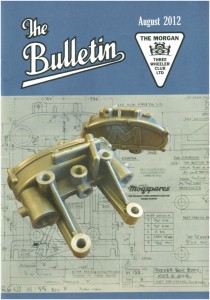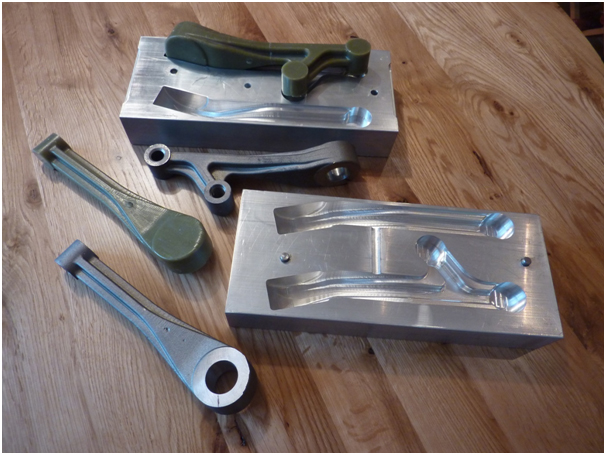Alongside his day job as a consultant to the Pharmaceutical Industry on brand protection, Ian Haynes reverse engineers components for vintage and classic cars and motorcycles from his Cheshire workshop in the UK.
“I use BobCAD primarily to design and machine the pattern work that is then used in the lost wax casting process in a local foundry. Using BobCAD has increased my capability for accurately producing complex 3D parts ten-fold.”
Ian owns and runs a 1933 Morgan Three Wheeler and through his involvement on the technical panel of the club spares scheme, parts produced from his castings had been shipped to Morgan enthusiasts world-wide. In addition, Ian has produced parts for Brough Superior motorcycles, Vincent motorcycles and most recently components for a company working to reproduce Rolls Royce Phantom 3 engines.
“I needed to make the leap from 2 ½ D milling to full 3D and BobCAD was the solution – full 3D capability allows me to produce a much wider range of components that are true to the original design intent,” explained Ian.
Ian uses BobCAD-CAM V25 CAD and Mill in his shop.
“I had been using 2D CAD for a few years, coupled with some simple software for producing 2 ½ D tool paths. For certain components this was fine, but for many of the more complex engine components in particular I was finding my capability limited by not having proper 3D CAD-CAM tools. Particularly for small scale operations like mine there seems to be a significant cost and complexity barrier to overcome in moving to 3D. Eventually I found BobCAD and the rest is history. There is something of a learning curve to climb, but I found the support available from both the BobCAD team and the user community second to none.”
“My work flow with BobCAD starts with measuring the original component and producing a series of 2D sketches in BobCAD, I then use these to produce 3D models of the finished parts. The Boolean functions in BobCAD are then used to model the patterns – subtracting the component model from the stock model – then the tool paths are generated. Rocker boxes for Matchless engines is a typical example of a component produced with BobCAD and some finished castings were recently features on the cover of the Bulletin – the Morgan Three Wheeler Club magazine”
This photo shows the pattern work machined with BobCAD-CAM along with the waxes and finish machined steel steering arms for a Morgan Three Wheeler.
“Where I would like to go next is to introduce 3D scanning into the process – scanning the original component to generate the initial model. I think scanning would come into play at the end of the process as well to confirm that the finished parts are in fact a faithful replica of the original.”
Ian Haynes | 3C Innovation




thank you
Dear Ian,
I am attempting to fit BSA 8″ hubs onto a 2 speeder, and I’ve heard that someone had cast pairs of brakeplates in aluminium to make life easier (I was going to fabricate them in steel).
Were you that man and if so, do you have any left?
Regards,
Peter